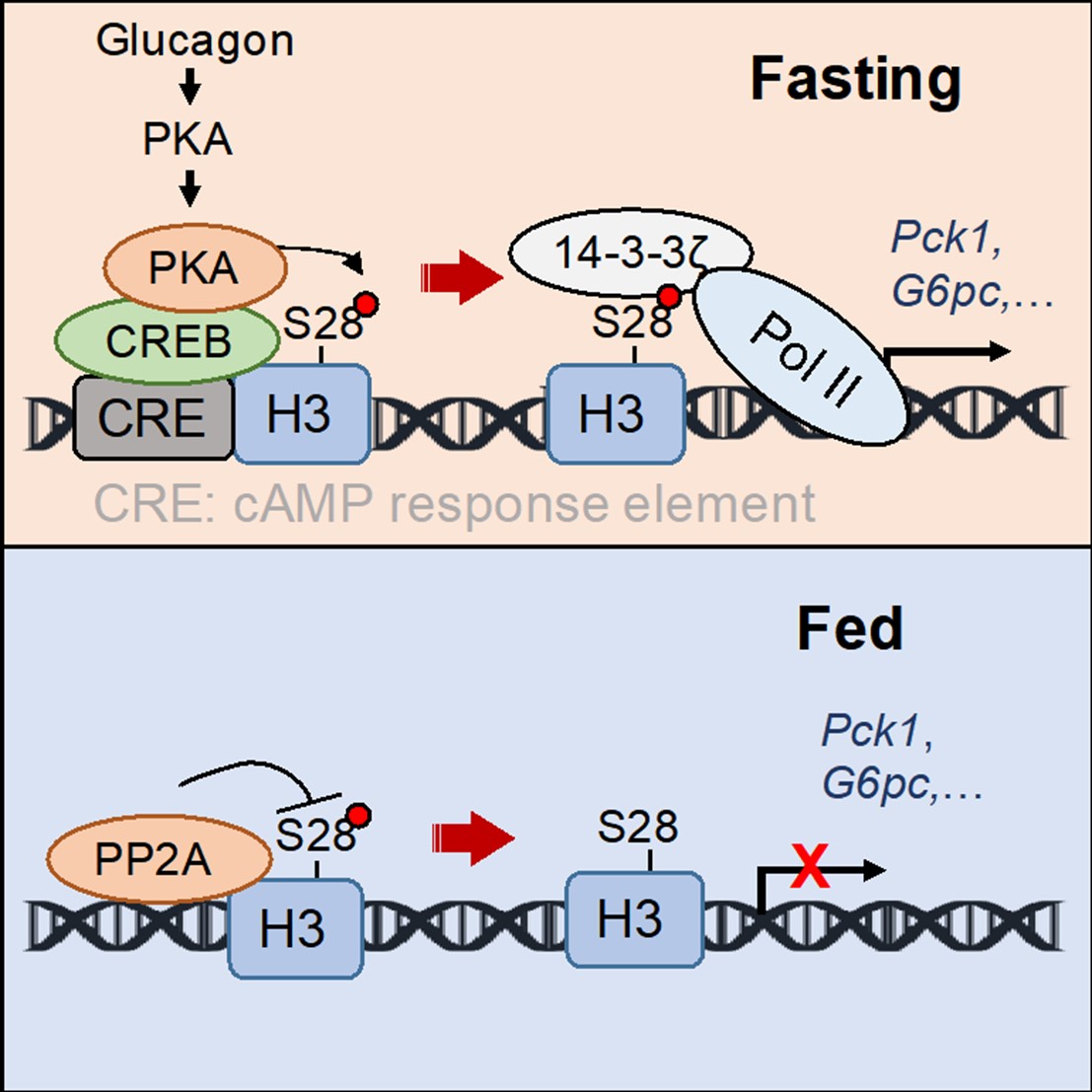New Wine in Old Bottles: Novel Function of Histone Phosphorylation Integrating Hepatic Gluconeogenesis
Shanghai scientists discovered a new function of Histone H3 serine 28 phosphorylation (H3S28ph) that regulates hepatic gluconeogenesis, providing new theoretical approaches for treating type II diabetes.
Type II diabetes exhibits hyperglycemia as a clinical symptom. The liver plays a crucial role in maintaining the organismal glucose homeostasis, and disruption of hepatic gluconeogenesis substantially accelerates the onset and progression of type II diabetes. Targeting hepatic gluconeogenesis is a possible treatment strategy for it. Transcription factors CREB and FoxO1 regulate classic hepatic gluconeogenic gene transcription. Yet, the rapid commencement of gene transcription depends on the remodeling of chromatin state due to changed histone modifications. The chromatin and epigenetic alterations during fasting-induced gluconeogenesis are unclear.
After a comprehensive search for fasting-induced variations in the liver's histone post-translational modifications, Prof. DING Qiurong's group from the Shanghai Institute of Nutrition and Health (SINH) of the Chinese Academy of Sciences discovered a significant increase in H3S28ph. Using RNA-seq, ChIP-seq, and CUT&Tag of H3S28ph, they determined that fasting substantially enhanced H3S28ph signaling, specifically in the transcriptional regulatory regions of gluconeogenesis genes.
Furthermore, researchers discovered that PKA and PP2A are the kinase and phosphatase of H3S28, respectively. And, 14-3-3ζ, which recruits RNA polymerase II to activate gene transcription, is the epigenetic "reader" of H3S28ph. Thus, the modulation of H3S28ph in hepatic phosphorylation in its entirety has been solved.
This study enhances the biological understanding of how the organism responds to fasting and regulates metabolic homeostasis at the chromatin level. Histone phosphorylation rapidly promotes hepatic gluconeogenic gene transcription by modifying glucagon-PKA-CREB pathway in response to fasting. It provides an innovative research concept for targeting gluconeogenesis in the treatment of type II diabetes.
This study, entitled "Histone phosphorylation integrates the hepatic glucagon-PKA-CREB gluconeogenesis program in response to fasting", was published online in Molecular Cell on March 1, 2023.
This work was funded by the Ministry of Science and Technology and the National Natural Science Foundation of China, and also supported by the public technology platform and animal platform of SINH.

The proposed model for histone phosphorylation in regulating hepatic gluconeogenic gene transcription. (Image by Prof. DING’s group)
Media Contact:
WANG Jin
Shanghai Institute of Nutrition and Health,
Chinese Academy of Sciences
Email: wangjin01@sinh.ac.cn
Web: http://english.sinh.cas.cn/
